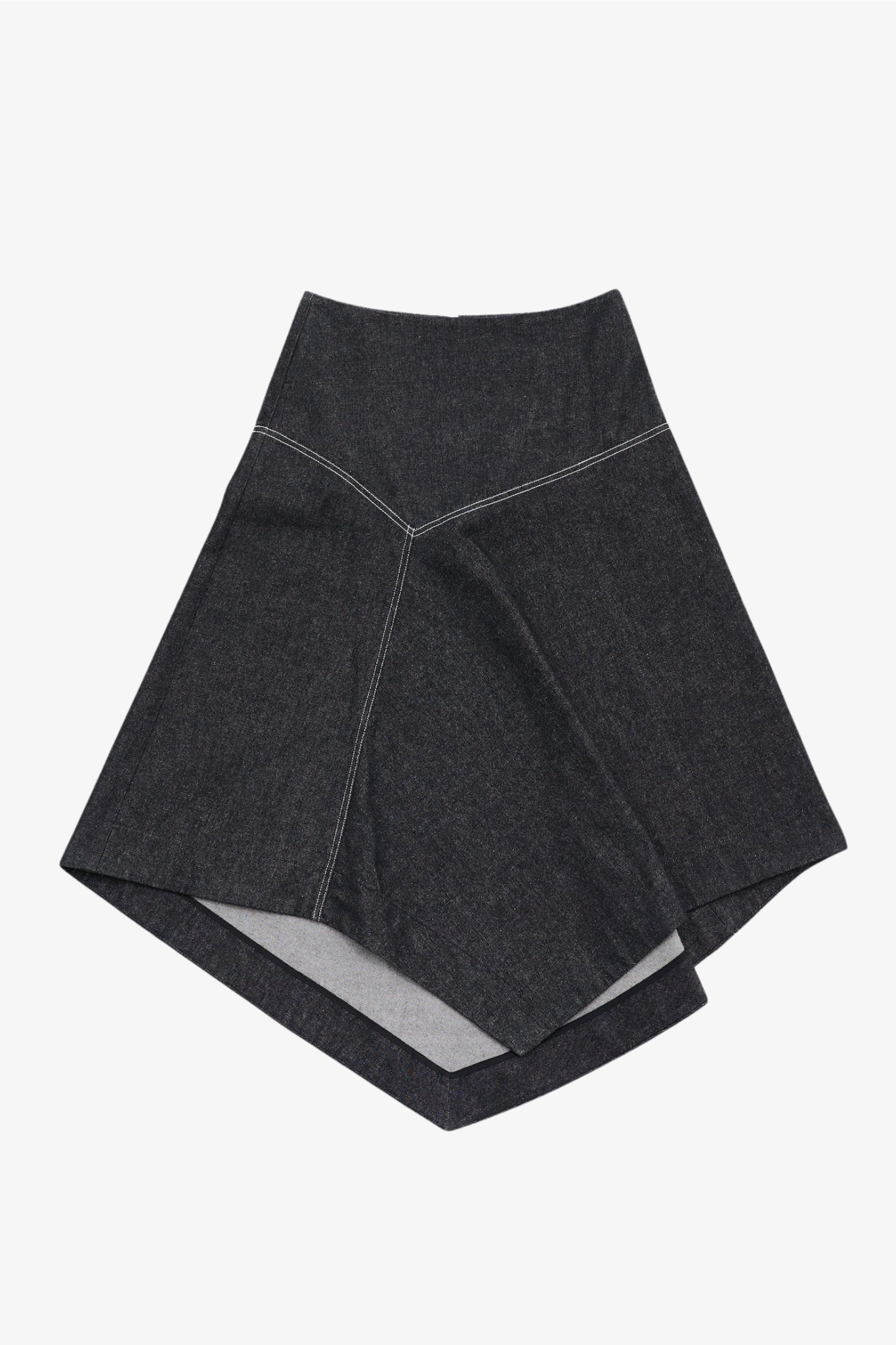KEY WORDS
AIR POLLUTION
The presence of toxic chemicals or compounds (including those of biological origin) in the air, at levels that pose a health risk. In an even broader sense, air pollution means the presence of chemicals or compounds in the air which are usually not present and which lower the quality of the air or cause detrimental changes to the quality of life (such as the damaging of the ozone layer or causing global warming).
BIODEGRADABLE
Given the right conditions and presence of microorganisms, fungi, or bacteria, the product will eventually break down to its basic components and blend back in with the earth. Ideally, but not always, these substances degrade without leaving any toxins behind.
BLEACHING
The process of decolorization of raw textile material by removing inherent and or acquired coloring components from the fiber. It provides base whiteness to the textile material which could be further whitened with the help of optical brighteners or dyed printed depending on the desired end use.
CARBON EMISSIONS
The release of greenhouse gases and/or their precursors into the atmosphere over a specified area and period of time. There are both natural and human sources of carbon dioxide emissions. Natural sources include decomposition, ocean release and respiration. Human sources come from activities like cement production, deforestation as well as the burning of fossil fuels like coal, oil and natural gas
CARBON NEUTRAL
Carbon neutrality refers to achieving net-zero carbon dioxide emissions. This can be done by balancing emissions of carbon dioxide with its removal (often through carbon offsetting) or by eliminating emissions from society (the transition to the "post-carbon economy").
CHEMICAL EXPOSURE
The measurement of both the amount of, and the frequency with which, a substance comes into contact with a person or the environment. Over 8,000 chemicals are used to turn raw materials into textiles. The industry uses around 43 million tons of chemicals to dye and treat our clothing. There isn't widespread transparency on what chemicals are being used - nor their effects on human health and the environment.
CHILD LABOR
Work that deprives children of their childhood, their potential and their dignity, and that is harmful to physical and mental development. It refers to work that: is mentally, physically, socially or morally dangerous and harmful to children; and/or interferes with their schooling by: depriving them of the opportunity to attend school; obliging them to leave school prematurely; or requiring them to attempt to combine school attendance with excessively long and heavy work.
COMMERCIAL WASTEWATER
Commercial wastewater comes from non-domestic sources, such as beauty salon, taxidermy, furniture refinishing, musical instrument cleaning, or auto body repair shops. This wastewater may contain hazardous materials and requires special treatment or disposal.
COMPOSTABLE
A product that can be placed into a composition of decaying biodegradable materials, and eventually turns into a nutrient-rich material. It is almost synonymous with “biodegradable”, except it is limited to solid materials and does not refer to liquids.
CONVENTIONAL COTTON
Cotton is a fluffy fiber that grows in bolls around the seeds of this plant, and the term ‘conventional cotton’ simply refers to cotton grown with traditional methods, especially when used in comparison with organic alternatives. Conventional cotton production relies heavily on the use of agro-chemicals. It has been estimated that cotton uses approximately 9% of the world's agrochemical pesticides, about 20% of the world's insecticides and 8% of the world's chemical fertilizers. The amounts of chemicals needed to grow cotton affect human health and the world's ecosystem.
DEADSTOCK FABRIC
Any leftover fabric that can't be used for its original purpose or order fulfilment anymore.
DEFORESTATION
Deforestation is the purposeful clearing of forested land. Throughout history and into modern times, forests have been razed to make space for agriculture and animal grazing, and to obtain wood for fuel, manufacturing, and construction, and textiles. Deforestation has greatly altered landscapes around the world.
DIRECT EMISSIONS
Emissions that are created by an individual; these emissions are controllable and connect a person to their influence on the environment.
DYE
A dye is a colored substance that chemically bonds to the substrate to which it is being applied. This distinguishes dyes from pigments which do not chemically bind to the material they color. The dye is generally applied in an aqueous solution, and may require a mordant to improve the fastness of the dye on the fiber.
FASHION ENERGY CONSUMPTION
Every stage of the textile industry’s supply chain is energy-intensive, from processing yarn, producing fabric, and fabricating textiles, to transporting and selling clothes to customers. The supply chain requires 10 times more energy to produce one ton of textiles than does the production of one ton of glass. An estimated 80% of the energy used in the fashion industry is used in textile manufacturing. Electricity is needed to run machinery such as sewing machines and air pumps in textile factories. Huge amounts of heat is needed for washing, drying and dying the cloth.
GOTS CERTIFIED
The Global Organic Textile Standard (GOTS) is an internationally recognized organic textile standard. GOTS ensures the organic status of textiles from the harvesting of the raw materials through environmentally and socially responsible manufacturing all the way to labelling, in order to provide credible assurances to the consumer. The standard covers the processing, manufacturing, packaging, labelling, trading and distribution of all textiles made from at least 70 percent certified organic natural fibers. The final fiber products may include, but are not limited to, yarns, fabrics, clothes and home textiles. However, this standard does not set criteria for leather products.
GREENHOUSE GAS
Any gas that has the property of absorbing infrared radiation (net heat energy) emitted from Earth’s surface and reradiating it back to Earth’s surface, thus contributing to the greenhouse effect. Carbon dioxide, methane, and water vapor are the most important greenhouse gases. Greenhouse gases have a profound effect on the energy budget of the Earth system despite making up only a fraction of all atmospheric gases. Concentrations of greenhouse gases have varied substantially during Earth’s history, and these variations have driven substantial climate changes at a wide range of timescales.
INDIRECT EMISSIONS
Indirect GHG emissions are emissions that are a consequence of the activities of the reporting entity, but occur at sources owned or controlled by another entity. Indirect emissions are emissions that are related to the individual, such as the carbon produced by the country the person lives in.
LABOR STANDARDS
The standard conventions with respect to the workers, in matters of basic worker rights, working conditions, wages to be paid & also related to job security.
LIVING WAGE
The remuneration received for a standard workweek by a worker in a particular place sufficient to afford a decent standard of living for the worker and her or his family. Elements of a decent standard of living include food, water, housing, education, health care, transportation, clothing, and other essential needs including provision for unexpected events.
LOSS OF BIODIVERSITY
Globally, patterns of overproduction and consumption are indirect drivers of biodiversity loss as they underlie land-use change and habitat loss, the overexploitation of natural resources, pollution and climate change which are the drivers of biodiversity loss. A large proportion of fashion’s biodiversity impact occurs due to habitat change resulting from agriculture for producing cotton, viscose, wool, rubber, leather hides or any other natural fiber. For example, fashion is a significant contributor to global deforestation with around 150 million trees logged every year to be turned into cellulosic fabrics, such as viscose.
MICROPLASTICS
Tiny plastic particles that result from both commercial product development and the breakdown of larger plastics. Clothing sheds microplastic when it is made of synthetic fibers. As a pollutant, microplastics are extremely harmful to the environment and animal health.
MINIMUM WAGE
The lowest remuneration that employers can legally pay their employees, the price floor below which employees may not sell their labor. Most countries had introduced minimum wage legislation by the end of the 20th century.
NATURAL FIBERS
Any hair like raw material directly obtainable from an animal, vegetable, or mineral source and convertible into nonwoven fabrics such as felt or paper or, after spinning into yarns, into woven cloth. A natural fiber may be further defined as an agglomeration of cells in which the diameter is negligible in comparison with the length. Although nature abounds in fibrous materials, especially cellulosic types such as cotton, wood, grains, and straw, only a small number can be used for textile products or other industrial purposes.
ORGANIC COTTON
Naturally cultivated cotton without the use of any synthetic agricultural chemicals such as fertilizers or pesticides or transgenic technology. Organic cotton production is not perfect. Because organic cotton yields fewer fibers than GMO cotton, it requires more plants and so more land to produce. Plus, before the organic fiber is turned into your favorite t-shirt, it requires lots of processing and dying, which are also very chemically intensive. Unless the item garment is GOTS certified, it can be hard to tell if the dyes used in production were organic or not. Nowadays, using the word ‘Organic’ can be in incredibly persuasive: beware of greenwashing and of fashion brands claiming to do better when they are still not addressing other vital issues.
POLLUTION
The introduction of harmful materials into the environment. These harmful materials are called pollutants. Pollutants can be natural, such as volcanic ash. They can also be created by human activity, such as trash or runoff produced by factories. Pollutants damage the quality of air, water, and land.
POLYESTER
A category of polymers that contain the ester functional group in every repeat unit of their main chain. As a specific material, it most commonly refers to a type called polyethylene terephthalate (PET). Polyesters include naturally occurring chemicals, in plants and insects, as well as synthetics such as polybutyrate. Natural polyesters and a few synthetic ones are biodegradable, but most synthetic polyesters are not. Synthetic polyesters are used extensively in clothing and are extremely harsh on the environment.
RAYON
A fabric made from purified cellulose fibers, which are typically created from wood pulp. Though rayon is derived from natural materials, it requires certain chemicals, so it’s considered to be a semi-synthetic fabric. One of the most common types of rayon is viscose rayon, which has a lot in common with cotton. It’s breathable, moisture-absorbent, and a popular choice for casual and athletic wear. It also shows up in dresses, blouses, and outerwear. Secondary types of rayon include modal rayon (typically made from beech trees) and lyocell (seen in everything from denim to dress shirts).
RECYCLED COTTON
Converting cotton fabric into cotton fiber that can be reused in textile products. Recycled cotton is also commonly referred to as regenerated cotton, reclaimed cotton, or shoddy. Recycled content includes recycled raw material, as well as used, reconditioned, and re-manufactured components. Textile recycling is generated from two primary sources: Pre-consumer: includes scraps created by yarn and fabric by-products. Post-consumer: includes garments, upholstery, towels, household items to be repurposed The largest volume of recycled cotton sources is produced through pre-consumer waste, such as cutting scraps. Post-consumer waste is more difficult to sort through due to various color shades, fabric blends, and it is generally a more labor-intensive process.
RECYCLING
The process of converting waste materials into new materials and objects. The recovery of energy from waste materials is often included in this concept. The recyclability of a material depends on its ability to reacquire the properties it had in its original state. Recycling is an alternative to "conventional" waste disposal that can save material and help lower greenhouse gas emissions.
REUSE
Using an object or resource material again for either the same purpose or another purpose without changing the object's structure in a significant way. It is to be differentiated from recycling based on this.
SOIL FERTILITY
The ability of soil to sustain plant growth by providing essential plant nutrients and favorable chemical, physical, and biological characteristics as a habitat for plant growth. Regenerative clothing increases soil fertility.
SUPPLY CHAIN EMISSIONS
Supply Chain Emissions are also known as Scope 3 Emissions. Scope 3 includes all indirect emissions generated by resources not owned or controlled by the company, but that the company indirectly impacts in its value chain (i.e. purchased goods and services, transportation, business travel and waste produced in the operations).
SUSTAINABILITY
The ability to meet the needs of the present without compromising the ability of future generations to meet their needs. The concept of sustainability is composed of three pillars: economic, environmental, and social—also known informally as profits, planet, and people. Increasingly, companies are making public commitments to sustainability through actions like reducing waste, investing in renewable energy, and supporting organizations that work toward a more sustainable future.
SUSTAINABLE FASHION
Sustainable fashion (also known as eco-fashion and ReFashion) is a movement and process of fostering change to fashion products and the fashion system towards greater ecological integrity and social justice. Sustainable fashion concerns more than just addressing fashion textiles or products. It addresses the whole system of how clothing is produced, who produced it how long the life span of a product is before it reaches landfill. This means dealing with interdependent social, cultural, ecological, and financial systems.
SYNTHETIC CHEMICALS
Any substance other than those naturally occurring in a plant, animal or mineral is considered synthetic if it is formulated or manufactured by a chemical process. It is estimated over 8000 synthetic chemicals are used in the fashion manufacturing process, this includes carcinogens and hormone disruptors. Carcinogens are substances that are linked to the formation of cancerous cells. Other harmful materials used include flame retardants, AZO dyes, chromium and formaldehydes.
SYNTHETIC FIBERS
Man-made fibers produced from chemical substances and are used for making clothes and other useful things. These are made by the process of polymerization. Synthetic fibers can either be completely synthetic or semisynthetic. Fibers that are purely synthetic like nylons, polyesters, acrylics are made from chemicals whereas semisynthetic fibers such as rayon's are produced with the utilization of natural polymers as raw material.
TEXTILE
Flexible material made by creating an interlocking network of yarns or threads, which are produced by spinning raw fibers into long and twisted lengths. Textiles are then formed by weaving, knitting, crocheting, knotting, tatting, felting, bonding, or braiding these yarns together.
TEXTILE DYE
Dyeing is the application of dyes or pigments on textile materials such as fibers, yarns, and fabrics with the goal of achieving color with desired color fastness. Dyeing is normally done in a special solution containing dyes and particular chemical material. Dyes may be in the form of powders, crystals paste of liquid dispersions which dissolve completely in aqueous solutions like water. The two primary categories of dyes; natural dyes and synthetic dyes.
UPCYCLED
To recycle something in such a way that the resulting product is of a higher value than the original item. Providing a second life to a discarded object of lesser value.
WASTE
Waste is any substance which is discarded after primary use, or is worthless, defective and of no use.
WOOL
A textile fiber obtained from sheep and other animals, including cashmere and mohair from goats, qiviut from muskoxen, hide and fur clothing from bison, angora from rabbits, and other types of wool from camelids. Wool consists of protein together with a small percentage of lipids. In this regard it is chemically quite distinct from the more dominant textile, cotton, which is mainly cellulose.
WORKING CONDITIONS
The working environment and aspects of an employee’s terms and conditions of employment. This covers such matters as: the organization of work and work activities; training, skills and employability; health, safety and well-being; and working time and work-life balance. Pay is also an important aspect of working conditions.



